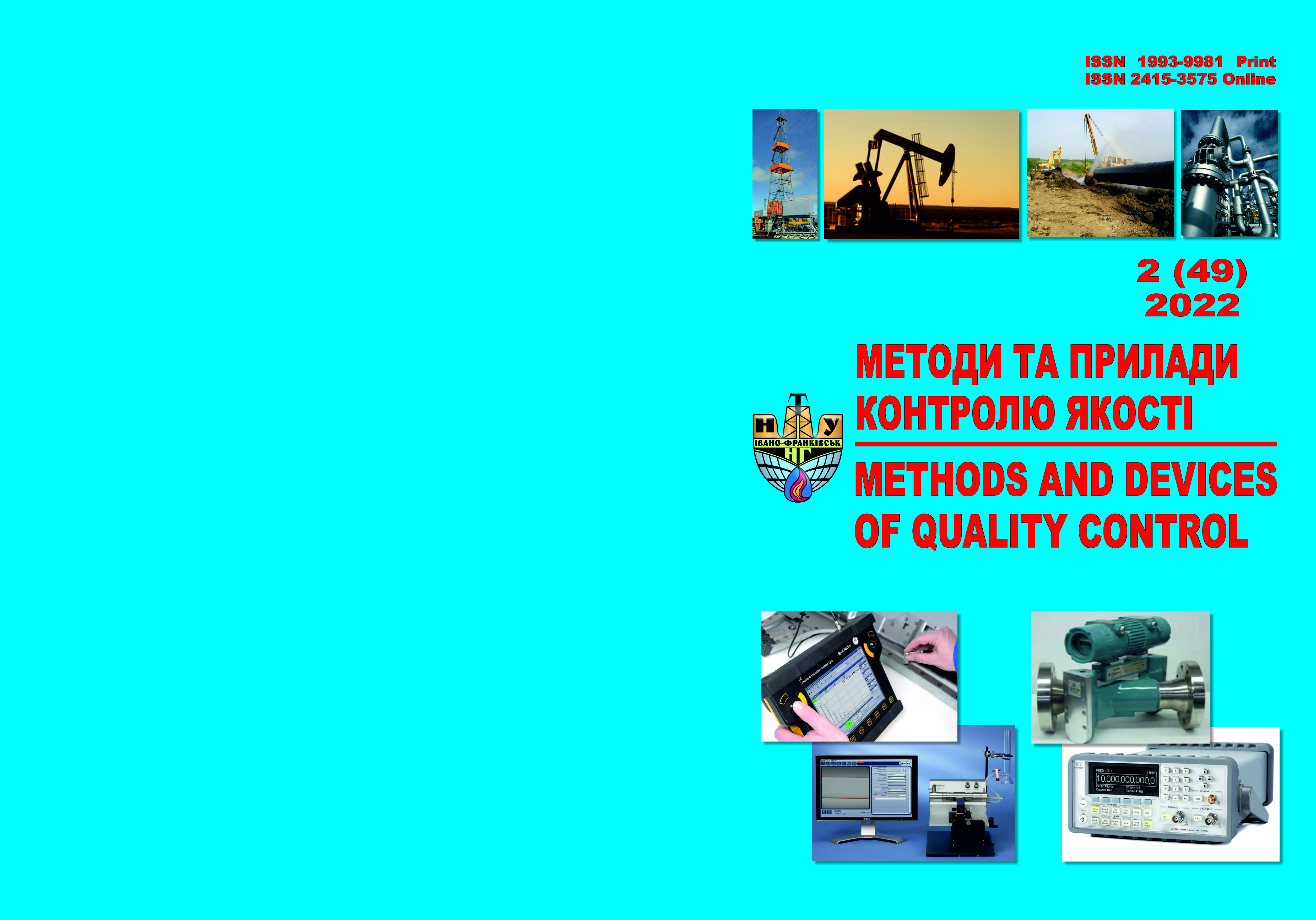АЛГОРИТМ ОБЧИСЛЕННЯ ГРУПОВОЇ ТА ФАЗОВОЇ ШВИДКОСТЕЙ ПОШИРЕННЯ УЛЬТРАЗВУКОВОЇ СПРЯМОВАНОЇ МОДИ В СТІНКАХ МЕТАЛЕВИХ КОНСТРУКЦІЙ
DOI:
https://doi.org/10.31471/1993-9981-2022-2(49)-27-35Ключові слова:
ультразвук, металоконструкції, спрямовані хвилі, неруйнівний контроль.Анотація
В роботі представлено алгоритм обчислення фазової та групової швидкостей ультразвукових спрямованих мод в стінках металевих конструкцій. Представлено теоретичну частину, що математично описує параметри мод ультразвукових хвиль та дає фізичні основи для використання алгоритму. В роботі дано і обґрунтовано необхідність проведення контролю металевих конструкцій на основі магістральних трубопроводів. Показано фотографії нештатних ситуацій пов’язаних із зсувами ґрунтів, дано аналіз чинників, що впливають на технічний стан металоконструкцій. Обґрунтовано причини здійснення контролю металоконструкцій для вияснення впливу нештатних ситуацій на зміну рівня технічного стану. Побудований алгоритм обчислення фазових та групових швидкостей ультразвукових спрямованих мод представлено графічно та дано пояснення основних блоків його роботи. Алгоритм реалізовано на мові програмування MatLab, оскільки було обґрунтовано використання мови для проведення складних математичних обчислень та графічного представлення результатів із можливістю подальшого аналізу. Алгоритм складається із компонентів, які реалізовані у вигляді підпрограм, що забезпечує логіку побудови та можливість повторного використання коду програми алгоритму. Алгоритм вирішує математичну задачу пошуку мод ультразвукових спрямованих хвиль в хвилеводі, тому в роботі представлено умови застосування результатів алгоритму для проведення контролю в натурних умовах. Дано опис і послідовність операцій, що потрібно здійснити для успішного конфігурування конструкції із генеруючих та приймальних ультразвукових первинних перетворювачів. Для можливості точкового контролю результатів алгоритму та лабораторних практичних вимірювань параметрів спрямованої хвилі представлено таблицю результатів із числовими значеннями амплітуди хвилі та координат її реєстрації, що дасть змогу більш точно налаштувати лабораторні дослідження. Отримані відхилення результатів в натурних умовах проведення контролю від приведених в роботі дасть змогу більш детально провести аналіз змін технічного стану досліджуваного об’єкту. Приведено висновки результатів досліджень.
Завантаження
Посилання
Liutak I.Z., Kisilʹ I.S. Ulʹtrazvukovyy kontrolʹ parametriv tekhnichnoho stanu mahistralʹnykh truboprovodiv. Ivano-Frankivsʹk, 2010. 285 s. [in Ukrainian]
Cantrell, J. H., and K. Salama. Acoustoelastic characterisation of materials. International materials reviews. 1991 36, no. 1. 125 – 145.
Man, Chi-Sing, and W. Y. Lu. Towards an acoustoelastic theory for measurement of residual stress. Journal of elasticity 1987 17, no. 2 p. 159-182.
Wang, Ting-Ting, Yan-Feng Wang, Zi-Chen Deng, Vincent Laude, and Yue-Sheng Wang. Reconfigurable coupled-resonator acoustoelastic waveguides in fluid-filled phononic metaplates. Composite Structures 2033 303 p. 116 – 355.
Zeng, Shengyang, Jinying Zhu, Bibo Zhong, and Xiongbing Li. Thermo-acoustoelastic effect of Rayleigh wave: Theory and experimental verification. Ultrasonics. 2023 p. 106 – 948.


.png)




